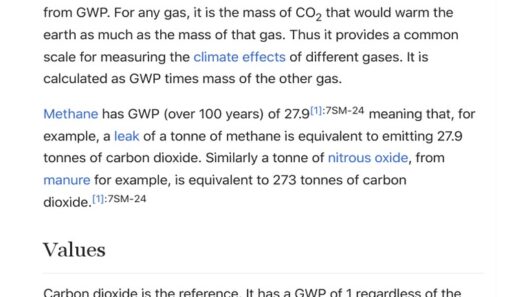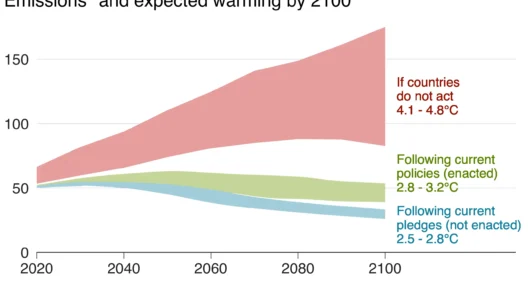Texas, the vast expanse often hailed for its independent spirit and robust economy, stands on the precipice of an unprecedented transformation due to global warming. As climate change continues to assert itself, the implications for this state are both profound and multifaceted. The question arises: how will the Lone Star State adapt, and perhaps reinvent itself, in response to these climatic upheavals? The challenge is not merely environmental; it is a matter of identity, economy, and the very fabric of society.
To comprehend the looming changes, one must first grasp the current climatic landscape across Texas. Spanning over 268,000 square miles, Texas experiences a range of climates from arid desert in the west to humid subtropical in the east. These diverse ecosystems harbor unique habitats but face vulnerabilities as average temperatures trend upward. The National Oceanic and Atmospheric Administration has indicated that Texas has already warmed by nearly two degrees Fahrenheit over the past century. This rise in temperature is expected to accelerate, leading to more extreme weather patterns.
The escalating severity of heat waves is one of the most evident consequences of global warming. With the state enduring prolonged periods of scorching temperatures, agricultural sectors including cotton, corn, and cattle farming will encounter significant challenges. The problem is twofold: diminished crop yields and increased irrigation demands exacerbated by dwindling water resources. As water scarcity becomes more pronounced, farmers may find themselves wedged between dwindling moisture and an ever-increasing need for it. This creates a poignant dilemma—can Texas maintain its agricultural dominance while adapting to the whims of a changing climate?
Moreover, coastal Texas faces its own brand of peril. The state’s coastal regions are vulnerable to rising sea levels, exacerbated by melting polar ice and land subsidence. Houston, the fourth-largest city in the United States, sits precariously close to the Gulf Coast, facing an intricate interplay of flooding and storm surge risks. The annual hurricane season could morph into a more ferocious beast, with storms gaining strength over warmer ocean waters. The implications for urban planning, infrastructure resilience, and housing markets are profound. Will Texas cities bubble with potential, or will they become fraught with peril as residents confront more frequent evacuations?
For Texas’ ecosystems, the impact of climate change presents critical scenarios. Indigenous flora and fauna find themselves under siege as their habitats grapple with shifting temperature norms. Species extinction rates are poised to escalate, disrupting ecological balances. The loss of biodiversity can have cascading effects; pollinators crucial for crop production might dwindle, weakening agriculture further. Consequently, one must ponder: can Texan naturalists cultivate their land and sustain the environment amid such turbulence?
Urbanization complicates Texas’ climate crisis further. Rapid population growth leads to urban sprawl, which increases the demand for energy and resources. Cities such as Austin, Dallas, and San Antonio face mounting pressure to curb greenhouse gas emissions stemming from transportation and industrial sources. The transition towards renewable energy—solar and wind—offers an optimistic avenue. Texas has emerged as a national leader in wind energy production, yet the proliferation of fossil fuels remains deeply embedded within its economy. The challenge lies in accelerating this transition while preserving economic stability and job security. Can Texas harness its entrepreneurial spirit to pivot towards a greener energy economy?
The socio-economic ramifications of climate change stretch far beyond the natural environment. Many communities, particularly vulnerable populations, bear the brunt of these transformations. Disparities in access to resources can intensify as climate impacts converge with existing socio-economic inequities. Marginalized communities may lack the funds or resources to adapt to rising costs associated with climate resilience, thereby deepening societal divides. This is a pivotal moment for Texas to deliberate: how can it foster inclusivity while navigating climate-induced transformation?
In response to these pressing challenges, advocacy for sustainable policies and practices has gained momentum across Texas. Community-driven solar initiatives, urban reforestation, and innovative water conservation strategies are being implemented in various locales. However, these grassroots movements must be supported by robust state and federal policies that emphasize sustainability and resilience. Investments in green infrastructure can catapult Texas towards a future where economic growth aligns with environmental stewardship. The question remains—will policymakers prioritize sustainable solutions or remain entrenched in short-term gains?
Education and awareness also play instrumental roles in Texas’ climate adaptation journey. By equipping citizens with knowledge about environmental issues, the state can ignite impactful grassroots movements. Schools can integrate climate literacy into their curricula, teaching future generations about the significance of sustainability. Ultimately, the youth of Texas might spearhead initiatives to combat climate change, catalyzing wide-ranging transformations based on environmental ethics.
As Texas stands at this critical juncture, it invites contemplation. The Lone Star State’s landscapes, economies, and communities possess the potential for remarkable resilience in the face of global warming— provided they embrace innovative solutions and collaborative efforts. Will Texas rise as a beacon of adaptability and sustainability, or will it falter under the weight of complacency and conflict? The answer is not predetermined. The future of Texas in an era of climate change hinges on the actions taken today, laying the groundwork for generations to come. The challenge is now clearly defined: will Texas undertake a journey toward a flourishing, sustainable future, or will it remain ensnared in the quagmire of its current path?







